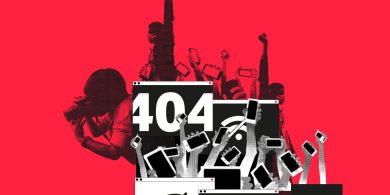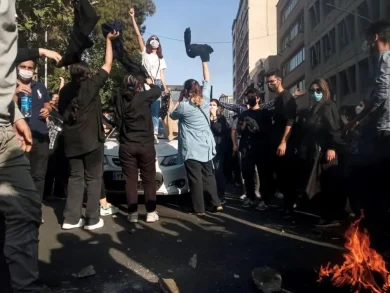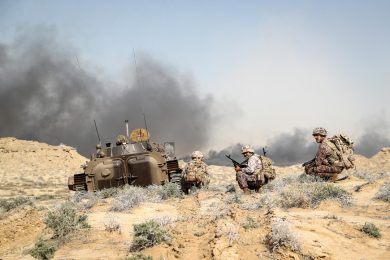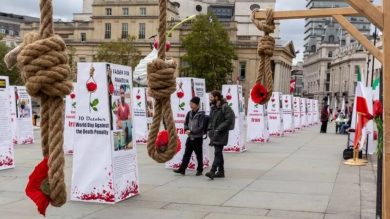Three words. That’s all it took to ignite a revolution. “Women, Life, Freedom”—a slogan born from pain and injustice—has become the heartbeat of a nation demanding change. Originating from Kurdish feminist movements and embraced by Iranians following the tragic death of Mahsa (Jina) Amini in September 2022, this simple but powerful phrase has grown into a rallying cry for justice, dignity, and liberation. It has transcended language, borders, and politics, morphing from a protest chant into a symbol of a historic civil uprising.
In this opinion piece, we examine how “Women, Life, Freedom” evolved into a mass movement, why it resonates deeply within Iran, and how it has come to represent not just a struggle against gender oppression, but a national fight for freedom and democracy. We also explore the movement’s impact globally and why it matters now more than ever.
1. Origins: The Slogan That Started with Kurdish Women
The slogan “Jin, Jiyan, Azadî” (Kurdish for “Women, Life, Freedom”) has long been used by Kurdish feminists to center women in the struggle for liberation and self-determination. It emphasizes that without women, there can be no life, and without life, no freedom.
This philosophy is deeply rooted in resistance against patriarchy, authoritarianism, and colonialism—struggles that resonate across the Middle East. After Mahsa Amini, a 22-year-old Kurdish woman, was arrested by Iran’s morality police for “improper hijab” and died in custody, the phrase was translated into Persian and echoed across the nation.
2. Mahsa Amini: From Victim to Symbol
Mahsa Amini’s death was not the first case of state violence against Iranian women, but it was a turning point. Her identity as a young Kurdish woman, her innocence, and the sheer brutality of her death sparked a wave of outrage that couldn’t be contained.
Women began removing their hijabs publicly, cutting their hair, and burning headscarves—acts of defiance that would have once been unthinkable. Soon, protests erupted in dozens of cities, led and inspired by women but supported by all segments of society—students, workers, ethnic minorities, and men alike.
3. Why “Women, Life, Freedom” Resonates in Iran
This slogan encapsulates three pillars of the Iranian people’s struggle:
a) Women
Iranian women are at the forefront because they face the most visible and symbolic repression. The compulsory hijab, unequal family laws, and restricted public freedoms are daily reminders of institutionalized patriarchy enforced by the Islamic Republic and its armed wing, the IRGC.
b) Life
“Life” speaks to the broader conditions in Iran—economic hardship, state violence, surveillance, and hopelessness. The regime’s mismanagement and corruption have crushed opportunities and aspirations, especially among youth.
c) Freedom
At its core, this is a freedom movement. The slogan channels a universal longing for political, social, and personal autonomy—from freedom of speech to freedom from fear.
4. The IRGC’s Role in Repressing the Movement
The Islamic Revolutionary Guard Corps (IRGC) and its affiliated forces, including the Basij, responded to the protests with extreme violence:
• Hundreds killed in the streets, many of them young women and teenagers.
• Thousands arrested, including minors.
• Torture, rape, and public executions reported in detention centers.
• Internet blackouts to control the narrative and silence dissent.
The IRGC didn’t just view these protests as civil unrest—it treated them as existential threats. Because they were. The regime had never faced a movement so organic, so cross-generational, and so led by women.
5. The Role of Iranian Women in Revolution
Iranian women aren’t just participants; they are the architects of this revolution. Teachers, journalists, lawyers, students, and everyday citizens have become organizers and symbols of change.
Prominent voices include:
• Narges Mohammadi, Nobel Peace Prize winner, imprisoned for years and still speaking out.
• Nasrin Sotoudeh, human rights lawyer, punished repeatedly for defending women arrested for removing hijabs.
• Masih Alinejad, journalist in exile who has mobilized global campaigns like #MyStealthyFreedom.
Their leadership is reshaping not just gender roles, but the very fabric of political resistance in Iran.
6. A Movement Without Leaders but With Purpose
The “Women, Life, Freedom” movement is decentralized and leaderless by design, which makes it harder for the regime to crush. There is no central figure to arrest, no single headquarters to raid.
Instead, the revolution is carried forward by millions of individuals, empowered by social media, solidarity networks, and shared outrage. It is as much about changing minds as it is about changing systems.
7. Global Echoes and International Solidarity
This slogan has become a global chant heard in:
• Protests in Berlin, Paris, New York, and Sydney.
• Speeches at the UN and European Parliament.
• Messages of solidarity from celebrities, human rights groups, and exiled Iranians.
But solidarity must go beyond hashtags. The international community must:
• Support internet freedom technologies for activists inside Iran.
• Sanction IRGC leaders for crimes against women and protesters.
• Offer asylum and resources to Iranian dissidents.
• Recognize the movement as a legitimate struggle for human rights and democracy.
8. Why This Movement Matters for the Region and the World
Iran is a regional powerhouse. What happens in Iran ripples across the Middle East—from women’s rights in Afghanistan to freedom movements in Syria and Lebanon.
If Iranian women can bring change to one of the world’s most entrenched theocracies, it will:
• Empower women across authoritarian regimes.
• Undermine state-sanctioned misogyny globally.
• Reignite feminist and democratic movements in places where hope has faded.
This revolution has the potential to shift global narratives about Muslim women, resistance, and the meaning of freedom in the 21st century.
9. Challenges Ahead
Despite its strength, the movement faces challenges:
• The regime’s willingness to use extreme violence.
• Fatigue and psychological trauma among activists.
• Global distractions that may overshadow Iran in the media cycle.
But every time a woman refuses to comply, every time a chant echoes in a classroom or on a rooftop, the regime is reminded: this revolution isn’t going away.
Conclusion: From Slogan to Systemic Change
“Women, Life, Freedom” is no longer just a slogan. It is a manifesto, a dream, and a demand. It represents a new vision for Iran—one led by the people, centered on equality, and driven by hope.
Iranian women have not only exposed the cruelty of the system; they have shown the world what courage looks like. Their fight is not only for themselves—it is for everyone longing to live free.
Join Our Newsletter!
Stay informed with the latest updates, news, and ways to take action in the fight for justice and global security. Sign up now to get updates delivered straight to your inbox!





